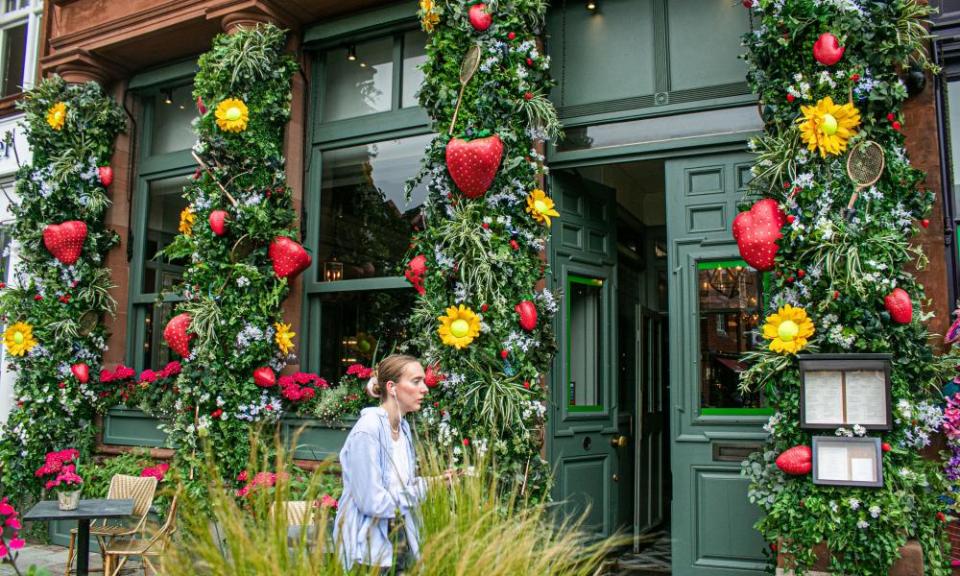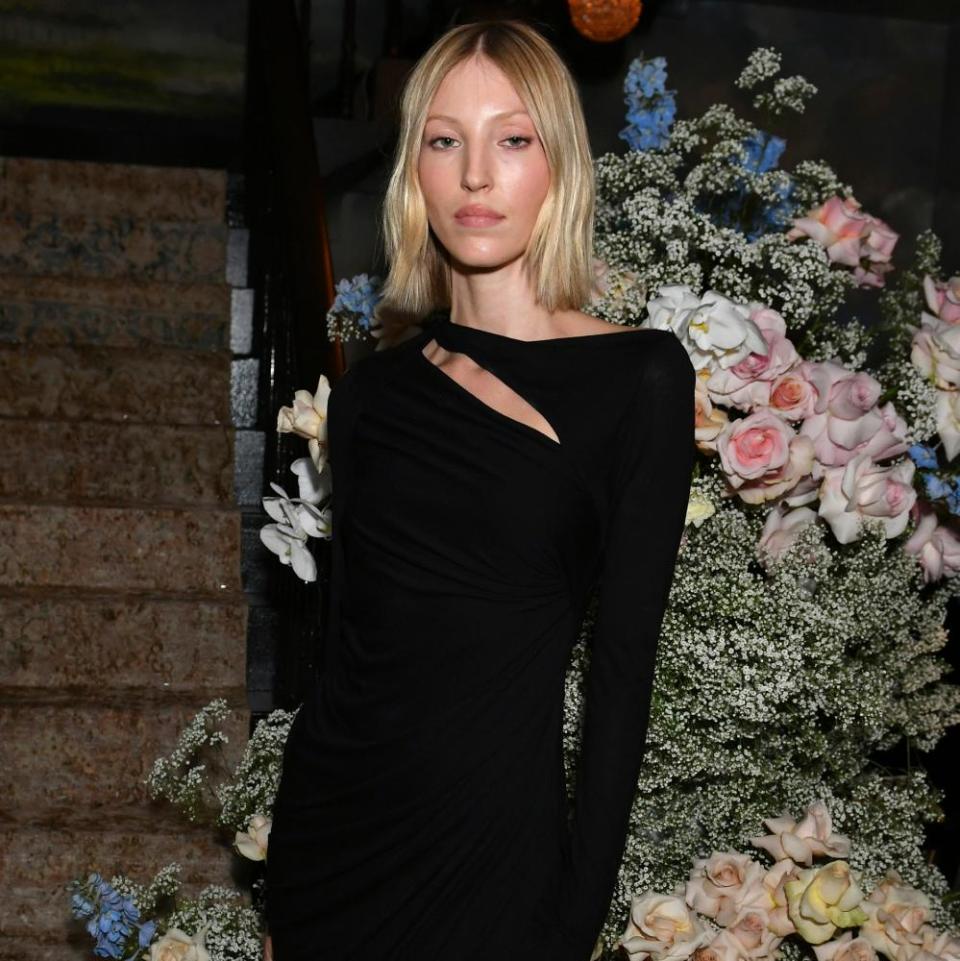Tacky or trendy? Fake flowers are ‘blooming’ all over the country

They were once widely sneered at, associated with shabby guesthouses and used as a metaphor for all things depressing in the Radiohead anthem Fake Plastic Trees. But artificial plants, particularly fake flowers, have become an unlikely yet burgeoning trend – despite critics highlighting their negative environmental impact and “vulgar” aesthetic.
The main driver of this boom has been the “flower wall”, with giant garlands of fake blooms and foliage providing a supposedly glamorous backdrop for selfies.
The trend seems to have started in a handful of high-end London bars and restaurants, which noticed how the free promotion from social media posts and check-ins brought new customers flooding in.
Mayfair club Annabel’s and restaurant celebrity-packed restaurant The Ivy were both early and high-profile adopters, and numerous others followed. Even self-appointed arbiter of good taste Nicky Haslam gave them his approval. “I have to admit to a LOVE of well-made fake flowers,” he said.
Now there are published lists touting the “most Instagrammable” restaurants – and they invariably feature vast and elaborate faux floral displays.
The trend is now moving beyond the restaurant sector – and the capital – and being picked up by hairdressers, beauty salons and even actual florists all over the UK.

And it is becoming a domestic trend too. Tesco, which these days has a dedicated buyer of fake blooms, is typical. “We’ve seen a nearly threefold year-on-year increase in sales of artificial flowers,” said a spokesperson.
At Amazon there are clear signs of the whole sector’s exponential growth. The trend now has its own distinct section within the “home & kitchen” department, where “decorative artificial flowers” is a sub-branch of “artificial plants” – just as it might appear in a gardener’s catalogue– and the range is vast.
In fairness, not all artificial flowers are plastic: there are varieties made from real silk, but they are vastly more expensive and make up only a fraction of sales. The great bulk are made from types of plastic.
The trend is also, again like the real flora it mimics, becoming seasonal: there are autumn-specific variants around just now – some Ivy restaurants, for example, feature displays of plastic mushrooms and autumn leaves, while plastic “Halloween wreaths” are becoming ever more popular. Soon the festive offerings will be rolled out. Plastic is not just for fake Christmas trees; it’s for fake holly wreaths, fake pine branch table settings and more.
Away from restaurants, the trend for plastic flowers in a domestic setting seems to have been separately driven by social media influencers. Figures such as Stacey Solomon and Mrs Hinch may have relatively low profiles in the wider media landscape, but on Instagram they are titans. And it’s perhaps inevitable that when either posts a happy domestic picture with an elaborate but artificial floral backdrop – as both regularly do – many among their respective 4.8 and 4.2 million followers will want to “get the look” in their own homes.
One London restaurateur who won’t be joining in the craze is Oisín Rogers of Mayfair’s Guinea Grill, which remains stubbornly decorated in the traditional way, with hanging baskets full of real flowers. He believes that the popularity of flower walls grew out of the long-established trend for photographing plates of food in restaurants to post on social media.

“You can’t take a selfie with the backdrop of food on a plate when you’re dining out, but you can do one against these flower walls. And you can see how initially you think they maybe look nice. But they’re not – they’re aesthetically awful and environmentally unsound.”
A backlash of sorts is beginning. Style and etiquette writer William Hanson this week denounced flower walls as one of the new indicators of vulgar taste – along with the topical addition “dining with Salt Bae”.
He said: “Restaurants have had a tough year, and if it helps them get bums on seats, part of me can understand why they do it. But it’s just so tacky. Of course it would be hugely expensive to have real flowers and to have to keep changing them every few days. But why have them at all? What’s wrong with an elegant sign on an attractive building?”
Beyond the taste issue is a more serious point. There has long been controversy around the popularity of artificial lawns. Not only can astroturf not be recycled, but it destroys habitats for birds, insects and, famously, hedgehogs. Now, it seems, we need to take the boom in fake flora seriously on an eco level too.
Constance Agyeman, plastics and recycling expert at innovation charity Nesta Challenges, said: “In Europe, we produce nearly 30 million tonnes of plastic waste a year, and less than a third is recycled. It can take 450 years for the simplest plastic to decompose. And as it breaks down, it produces micro-plastic remnants which enter rivers and, eventually, the food chain.
“To learn that we’re now seeing a surge in popularity for plastic flowers is utterly depressing. We need less plastic in our lives, not more.”

 Yahoo Finance
Yahoo Finance 